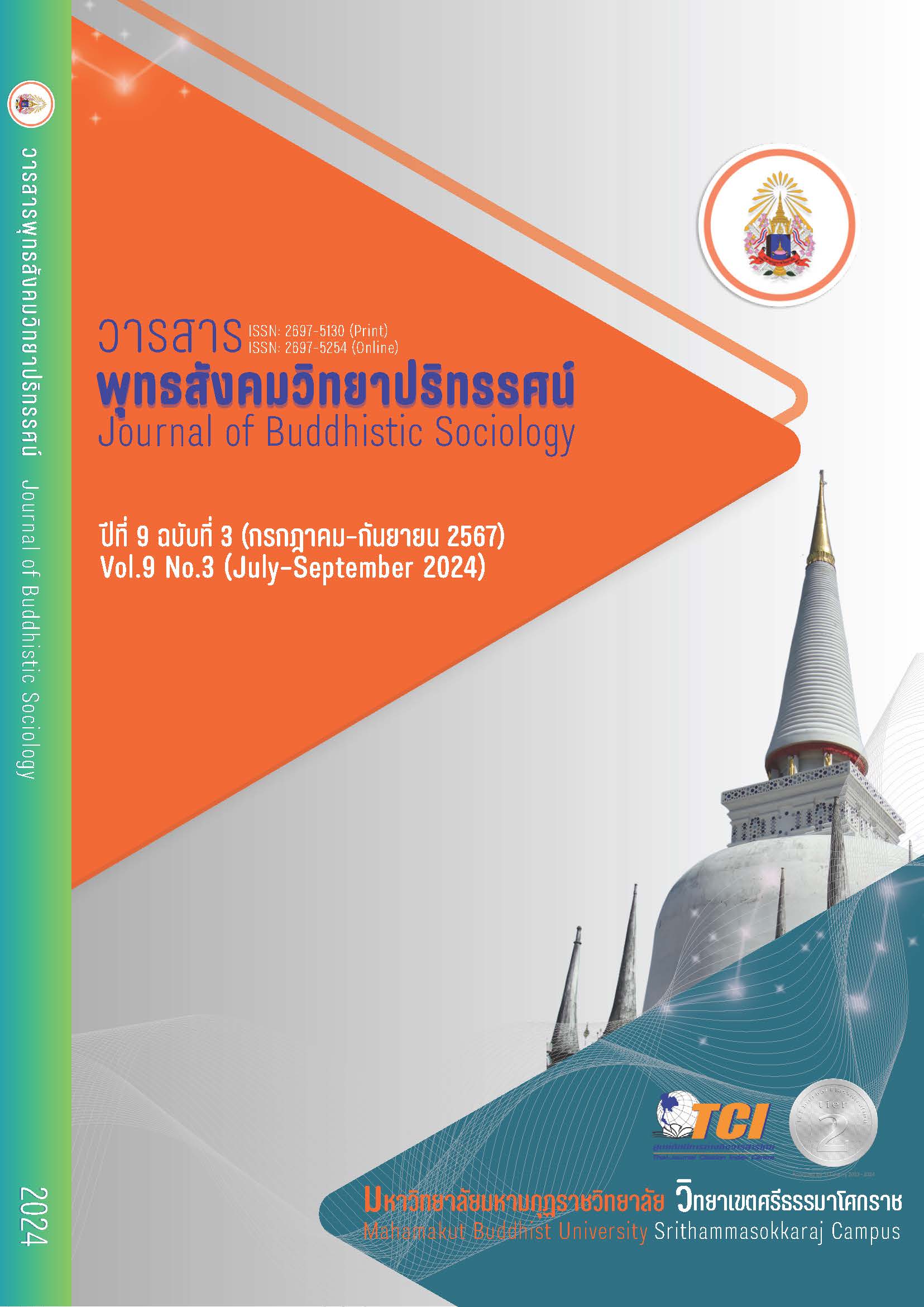THE CHINESE PROGRAM EVALUATION OF BENJAMARACHUTIT SCHOOL UNDER NAKHON SI THAMMARAT EDUCATIONAL SERVICE AREA OFFICE
Main Article Content
Abstract
This research aimed to evaluate the Chinese Program of Benjamarachutit School under the Nakhon Si Thammarat Educational Service Area Office. The sample consisted of 267 respondents who were school administrators, the Chinese Program Operation Committees, teachers, students, and parents. The research tool included 1) a questionnaire for asking opinions of school administrators, 2) a questionnaire for asking opinions of the Chinese Program Operation Committees, 3) a questionnaire and focus group discussion for teachers and students of the Chinese Program, 4) a questionnaire to find out the learning achievement in Chinese Subjects and focus group discussion for Chinese Program students, 5) a questionnaire to ask for opinions of parents of the Chinese Program students. The statistics used for data analysis were percentage, mean, standard deviation, and content analysis.
The research findings were as follows:
- The overall evaluation showed that the program assessment was at the highest level. The highest average was the Program's objectives, and the lowest was the General Conditions of the Program
- The overall evaluation showed that the program planning was at a high level. The highest average was Teaching Materials and equipment. The lowest was the Qualifications of Chinese Program Students.
- The overall evaluation showed that the Program's operation was at a high level. The highest average was Activities to Enhance Students' Capacity, and the lowest was Measurement and Evaluation.
- For the program evaluation and improvement, the strength was that all students passed the entrance exams to qualify for the Chinese Program. Problems and obstacles involved limited student classrooms in the school, leading to the disadvantages in providing the regular classrooms for the Chinese Program Students.
- Program acceptance assessment revealed that: 1) Overall, the learning achievement of Chinese Program students was at a satisfactory level, 2) The evaluation of the students under the core competencies of the curriculum was at a high level, and 3) The satisfaction of students and parents towards Chinese Program was at a high level. It can be concluded that the program acceptance passed the assessment criteria.
Article Details

This work is licensed under a Creative Commons Attribution-NonCommercial-NoDerivatives 4.0 International License.
References
กระทรวงศึกษาธิการ. (2542). พระราชบัญญัติการศึกษาแห่งชาติ พ.ศ. 2542. กรุงเทพมหานคร. คุรุสภาลาดพร้าว.
นิมิตร ธิยาม. (2558). การประเมินโครงการห้องเรียนพิเศษ เอ็ม อี พี โรงเรียนจอมทอง จังหวัดเชียงใหม่. ใน การค้นคว้าแบบอิสระศึกษาศาสตรมหาบัณฑิต สาขาวิชาการบริหารการศึกษา. มหาวิทยาลัยเชียงใหม่.
พลภัทร์ ศรีวาลัย. (2561). การประเมินโครงการห้องเรียนพิเศษ (English Program) ของโรงเรียนสิริรัตนาธร โดยประยุกต์ใช้รูปแบบการประเมินโครงการแบบ CSE ของอัลคิน. ใน วิทยานิพนธ์ศึกษาศาสตรมหาบัณฑิต สาขาวิชาการบริหารการศึกษา. มหาวิทยาลัยรามคำแหง.
พิยะภา ใจซื่อสมบูรณ์. (2563). การประเมินโครงการโรงเรียนวิถีพุทธของโรงเรียนวัดใหญ่บ้านบ่อ (บ้านบ่อราษฎรบำรุง). ใน การค้นคว้าอิสระศึกษาศาสตรมหาบัณฑิต ภาควิชาการบริหารการศึกษา. มหาวิทยาลัยศิลปากร.
รุ้งลาวัณย์ จันทรัตนา และคณะ. (2561). การประเมินโครงการจัดตั้งห้องเรียนพิเศษโปรแกรมวิทยาศาสตร์และคณิตศาสตร์ Science and Mathematics Program (SMP) มหาวิทยาลัยราชภัฏยะลา. วารสารมหาวิทยาลัยราชภัฏยะลา, 13(2), 203-215.
วิทวัฒน์ บูระพันธ์. (2562). การประเมินโครงการห้องเรียนพิเศษ ระดับมัธยมศึกษาตอนต้น โรงเรียนราชวินิตมัธยม โดยใช้การประเมินแบบซิปป์ (CIPP Model). ใน วิทยานิพนธ์ปครุศาสตรมหาบัณฑิต สาขาวิชาวิจัยและประเมินผลการศึกษา. มหาวิทยาลัยราชภัฏมหาสารคาม.
สำนักงานคณะกรรมการการศึกษาขั้นพื้นฐาน. (2547). แนวทางการพัฒนาคุณภาพการเรียน การสอนที่เน้นผู้เรียนเป็นสำคัญ. กรุงเทพมหานคร: สำนักงานคณะกรรมการการศึกษาขั้นพื้นฐาน.
สำนักงานสภาพัฒนาการเศรษฐกิจและสังคมแห่งชาติ. (2565). แผนพัฒนาเศรษฐกิจและสังคมแห่งชาติ ฉบับที่ 13 พ.ศ. 2566-2570. กรุงเทพมหานคร: สำนักนายกรัฐมนตรี.
Alkin, M.C. (1969). Evaluation Theory Development. New York: Russail Sage Foundtion.
Krejcie, R. V. & Morgan, D. W. (1970). Education and Phychological Measurment. New York: Minisota University.


